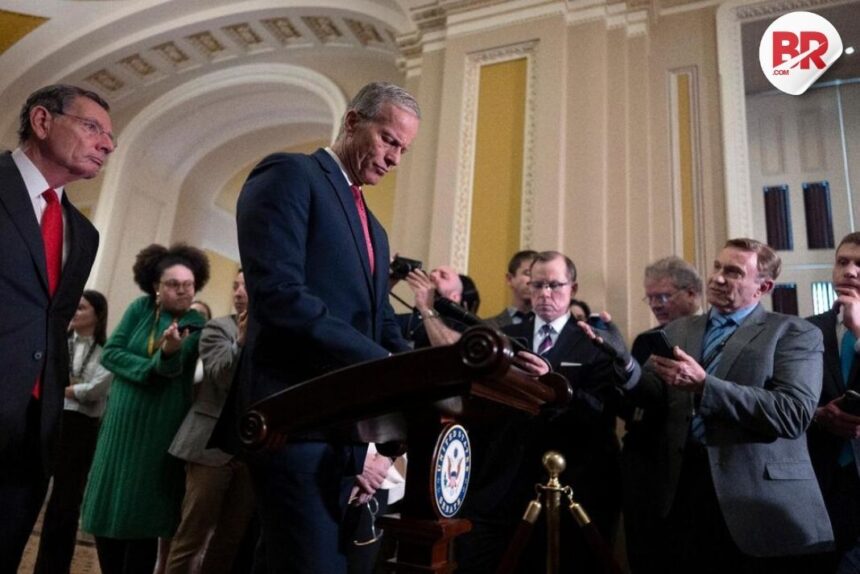
The U.S. Senate, controlled by Republicans, has passed a huge tax and spending plan—one that could reshape the American economy for years to come. The proposal, which echoes the Trump-era economic playbook, includes major tax cuts for both businesses and high-income individuals, along with sharp spending cuts to federal programs.
The plan passed strictly along party lines, with all Democrats voting against it. Supporters say it’s a smart move to boost investment and fight inflation. But critics argue it mainly helps the wealthy and large corporations, while putting essential social programs like Medicaid, food stamps, and education at risk.

What’s in the Plan?
-
Big Tax Cuts for the Rich and Corporations
The corporate tax rate would drop from 21% to 15%. Individuals in higher income brackets would also see major tax relief. Republicans say this will help businesses expand and hire more workers.
But according to the Tax Policy Center, much of the benefit will go to the top 1%, not the middle or lower-income earners. -
Spending Cuts to Balance the Budget
To offset the revenue loss, the plan slashes spending on programs like Medicaid, SNAP (food assistance), and federal education funds. This has raised alarm among Democrats and social advocates.
Groups like the Center on Budget and Policy Priorities warn that the cuts could worsen poverty and increase inequality. -
Rolling Back Regulations
The plan also aims to ease regulations on the energy and finance sectors. Supporters believe this will help businesses grow, but environmental groups and watchdogs worry it could hurt climate efforts and consumer protections.
Also Read: Trump’s Tariffs Ignite Global Trade War—Was It Worth It?
The Debate Heats Up
Democrats say the GOP is doubling down on “trickle-down economics,” which they claim failed to produce lasting benefits during the Trump years. They argue the rich will get richer, while working families lose vital services.
Senator Elizabeth Warren tweeted that “this is not an economic plan—it’s a blueprint for deepening inequality.” Meanwhile, Republicans like Senator Mitch McConnell insist the plan is “a necessary step toward rebuilding economic strength.”
The national debt, already over $34 trillion, looms large in the debate. Opponents say the tax cuts will explode the deficit. Supporters counter that growth from lower taxes will eventually balance the books.
What’s Next?
Even though the Senate passed the plan, it’s far from becoming law. The House still needs to approve it, and with Democrats holding a slim majority there, a major showdown is expected. Compromises may be necessary to move forward.
Also Read: Rising Costs, Falling Confidence: Trump’s Tariffs Fuel Recession Fears
What It Means for You
If the plan becomes law:
-
Big companies may see lower tax bills
-
Wealthy Americans will save more on taxes
-
Cuts could affect healthcare, food, and education programs for millions
-
Economic growth may rise in the short term—but inequality could widen
Whether this new chapter of trickle-down economics succeeds or backfires will depend on how it impacts everyday Americans—not just the stock market or Fortune 500 firms.
Final Thoughts
This tax and spending plan isn’t just about numbers. It’s about values. Should the government prioritize stimulating business, or protecting its most vulnerable citizens? Can both goals coexist?
The Senate GOP has made its move. Now the rest of Washington—and the American public—must decide what comes next.
Also Read: Eggs, Milk, and iPhones—Why Everything Suddenly Costs More












